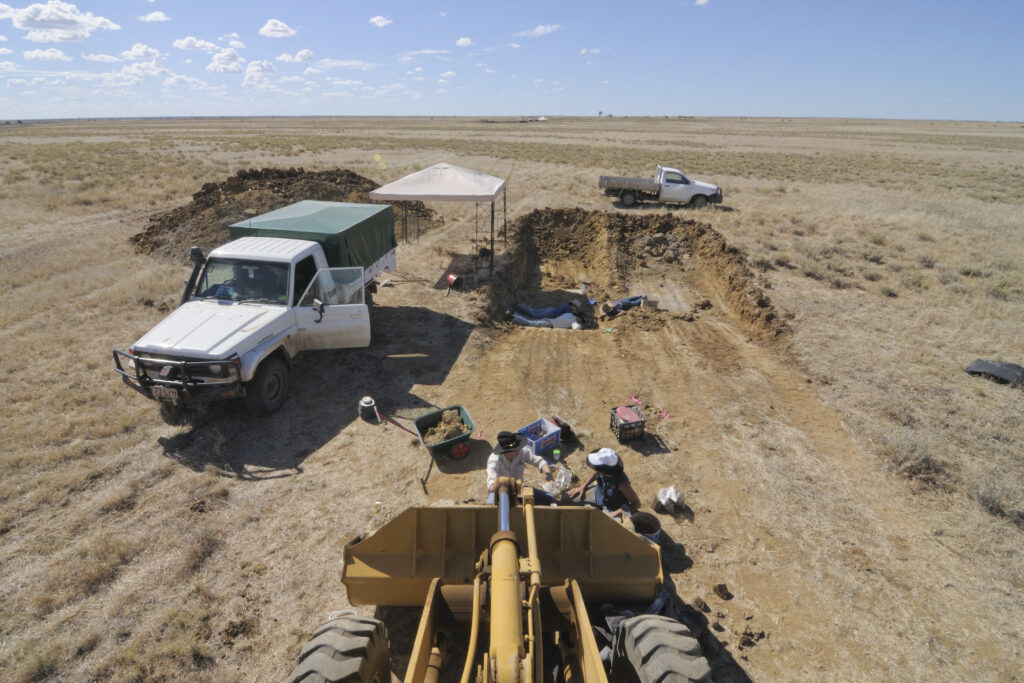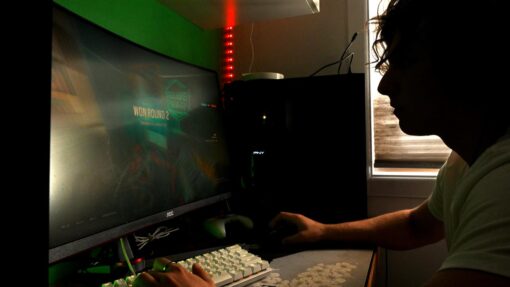Chicken-sized dinosaurs were on the menu of prehistoric croc
Suellen Hinde - Queensland Editor |
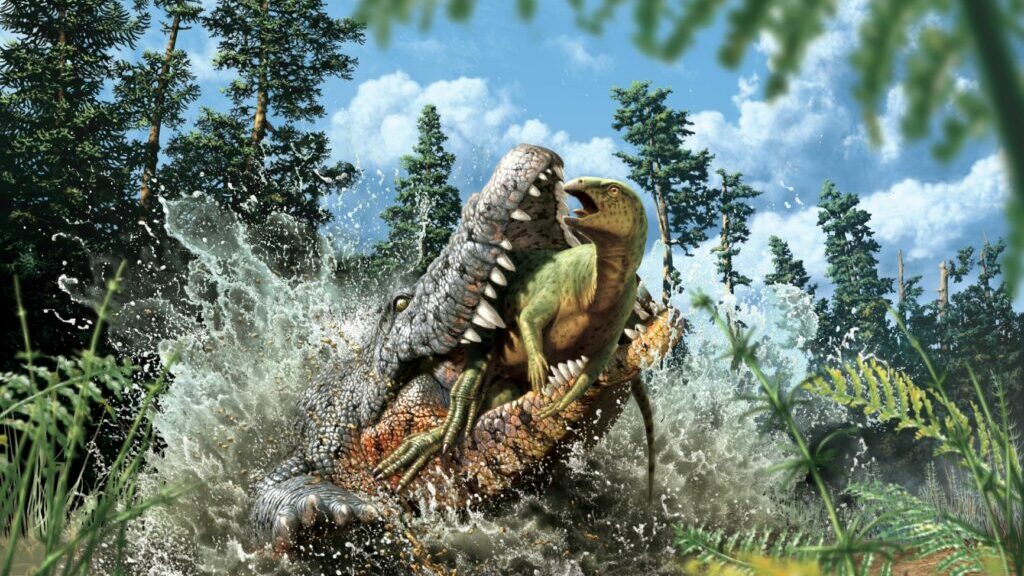
A powerful x-ray beam has been used by palaeontologists to discover chicken-sized dinosaurs were once on the menu of extinct crocodiles.
A 93-million-year-old relative of today’s crocodiles, was originally found entombed in a large boulder near the Central Queensland town of Winton, during a dinosaur dig in 2011.
The boulder was initially shattered by a front-end loader and has taken years to piece back together.
Now researchers have used one of the world’s most powerful beams of light to discover the contents of the prehistoric crocodile’s stomach, putting the results on display at the Australian Age of Dinosaurs Museum in Winton.
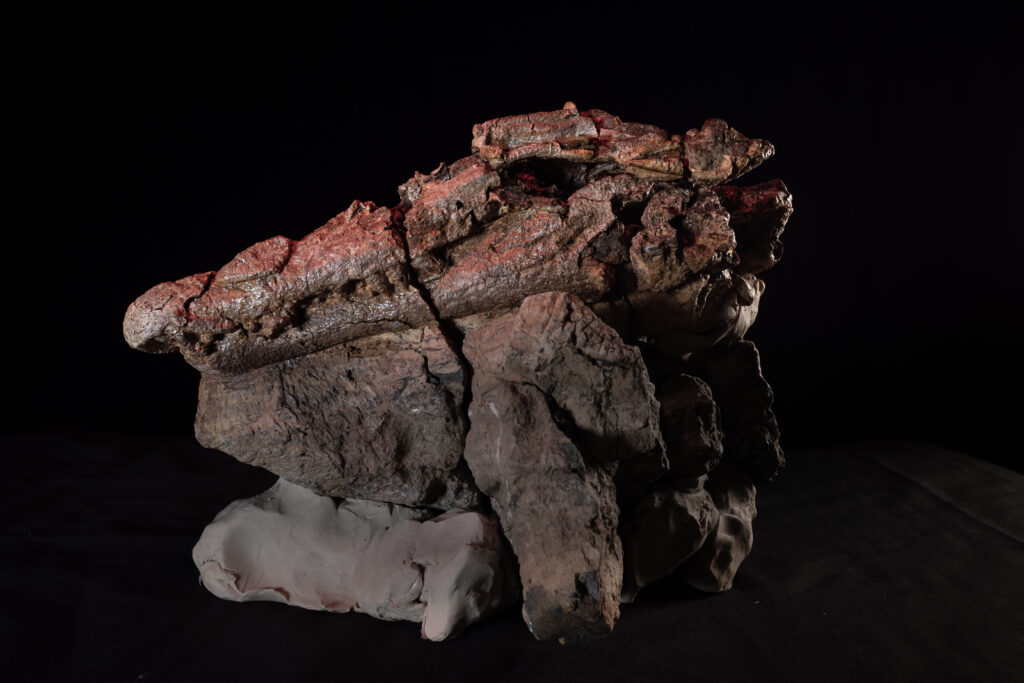
The discovery of dinosaur remains in the abdominal cavity indicates that dinosaurs were not always at the top of the food chain, but part of a more complex food web that included mammals, snakes, and crocodile-relatives.
The boulder was taken to Melbourne by lead researcher Dr Matt White from the University of New England and Dr Joseph Bevitt, a beamline scientist from the Australian Nuclear Science and Technology Organisation (ANSTO), who utilised the synchrotron to see exactly what was inside.
The synchrotron uses electrons to produce intense beams of light to examine molecular structure.
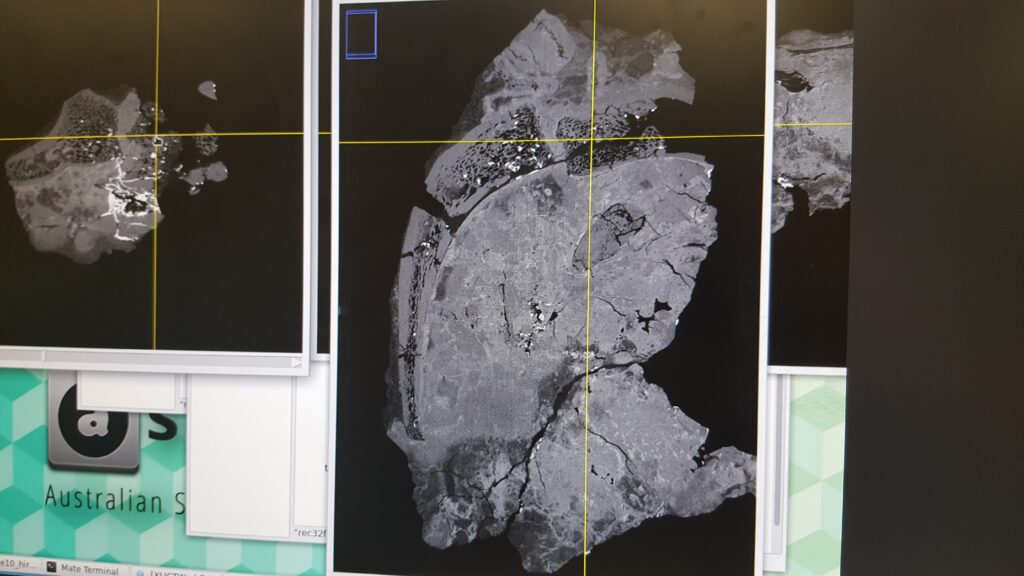
“This was the exciting part, after six years of piecing the concretion together, we were finally able to see how much of the skeleton was preserved and the results did not disappoint” said Dr Matt White.
“Along with the crocodile remains, located in its gut region, was a cluster of small dinosaur bones belonging to a juvenile herbivorous dinosaur.
“We knew it was juvenile as the vertebrae had not fused as they typically do in adults” said Dr White.
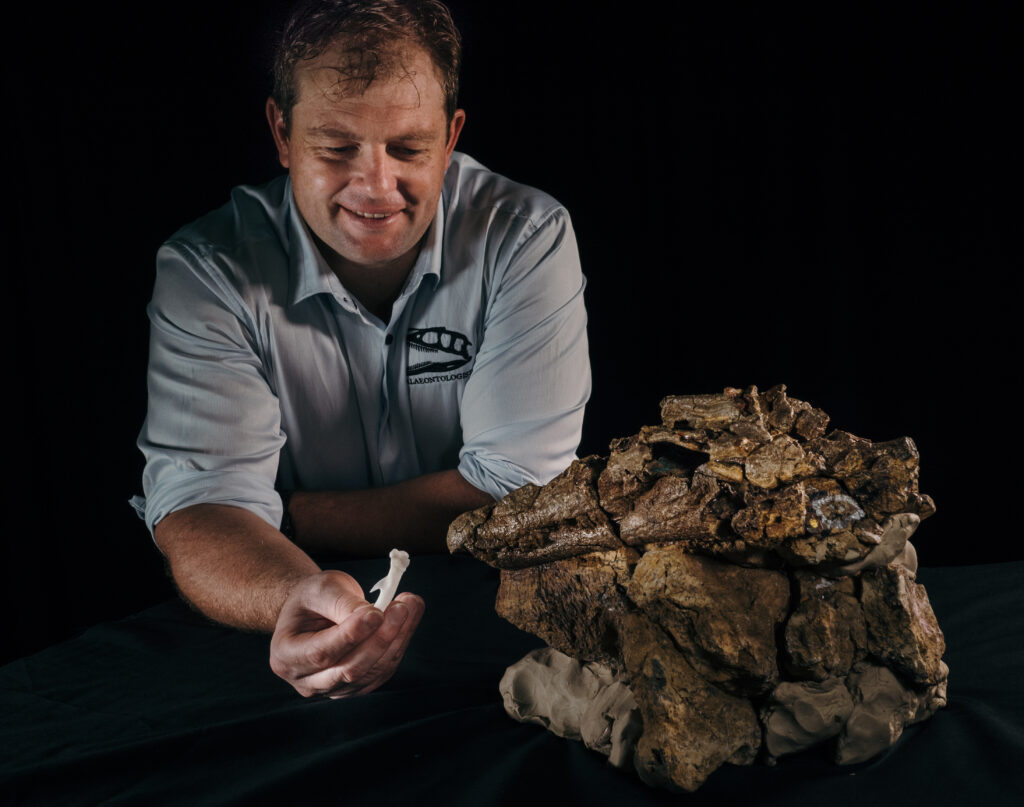
The crocodile was around 2.5m in length and the small ornithopod was around 1.7kg -roughly the size of a chicken.
The high-resolution scans even revealed bite marks on one of the bones.
Crocodiles have the most potent stomach acids in the animal kingdom, so the discovery of fossilised gut contents in this new fossil crocodile was not only surprising but it also revealed that the crocodile likely died shortly after its last meal.
The research team named the new animal Confractosuchus sauroktonos.
